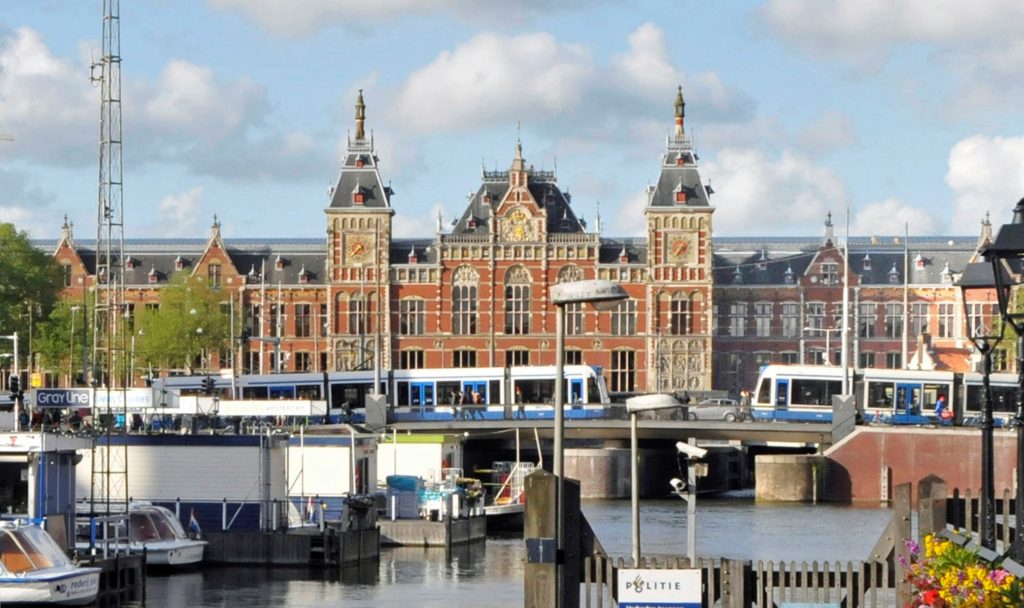
Amsterdam’s Central Station has become a symbol of the city, attracting more visitors than any other of the Netherland’s more than 60,000 national heritage sites. Like many other now iconic structures, critics originally panned both its location and its design.
Amsterdam developed along the south shore of a bay now known as IJ Lake. By the seventeenth century, the bay was among the busiest ports in the world. By the 1870s, trains had become as important as ships in bringing people to Amsterdam from throughout Europe. As a result, city planners identified potential sites for a major railroad terminal about a mile and a half inland from the port. Railroad engineers had a different idea. They wanted to build the station on three interconnected artificial islands spanning the south end of IJ Lake. The Dutch government accepted that plan over strenuous local objections. Because the terminal’s location effectively separated Amsterdam from its port, many at the time called the location a catastrophe. The station’s ornate brick exterior, featuring turrets and intricate details, was designed by Pierre Cuypers, who also designed the Rijksmuseum, Amsterdam’s famous state museum. Protestant critics lambasted its resemblance to medieval cathedrals. The station opened in 1889, after a number of delays caused by the instability of the marshy soil. It rests on more than 8000 wooden piles and includes a platform more than 0.4 miles long. The cast iron roof, supported on 50 curved trusses, was imported from England.
Today, Amsterdam’s Central Station serves more than 160,000 passengers a day, many arriving and departing on one of 50 international trains. The only passengers now coming to Amsterdam’s port arrive on cruise ships, which dock near the backside of the station. When the queen travels by train, she has access to an ornately decorated waiting room built exclusively for her.
Comments are closed.